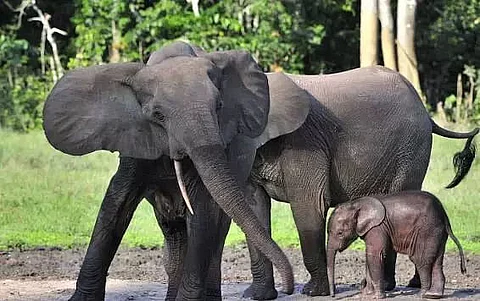
- Home
- Live Blog
- Breaking News
- Top Headlines
- Cities
- NE News
- Sentinel Media
- Sports
- Education
- Jobs

The Human-Elephant Conflict (HEC) in Assam's Goalpara district has become critical with herds of wild elephants attacking vehicles on a highway and destroying houses in different places of the district in which four human lives have been lost while one elephant died of electrocution. The growing intensity of elephant depredation points towards the limitations of current HEC management practices. The current conflict management primarily involves forest teams chasing away elephant herds from conflict hotspots and payment of compensation to victim families. As the area of conflict has expanded with more anthropogenic activities taking place along elephant corridors, often forest personnel fail to arrive on time at each spot and villagers are witnessed to take Suo moto action during the intervening period to chase away elephant herds. Similar conflicts in other parts of the state have also claimed human as well as elephant lives triggering apprehension of HEC soon becoming unmanageable in the state. The massive deforestation in Assam and neighbouring states due to the diversion of forest for the construction of roads, exploratory drilling and mining, coal mining, illegal felling of trees by timber smugglers, encroachment of land falling on elephant corridors for agriculture and other economic activities are at the root of degradation of elephant habitats. The degradation of habitats results in food shortages due to which elephant herds come out in search of food and water. Besides, elephants ranging on their corridors find human houses or any man-made structures en route posing obstacles to their free movement and want to clear their passage by destroying those. Viewed from the perspectives of the affected human population who are mostly farmers, the loss of paddies, and destruction of houses due to elephant depredation cause immense economic hardship and push them into penuries. They cannot afford to shift to a safer location and buy a new plot of land for farming for livelihoods and therefore chose to stay at the same location knowing very well about the risks involved due to unresolved conflict. According to the Forest Department, there is no permanent elephant reserve in its Goalpara Division and most elephant herds migrate from their habitats in neighbouring Meghalaya hills. More than 25% of the forest area under Goalpara Forest Division is under encroachment for rubber, tea and betel nut plantations aggravating the conflict. The department's submission before the Gauhati High Court on a Public Interest Litigation brings to light that although there is no elephant reserve within the Goalpara Forest Division, elephants in search of food come from Meghalaya and frequent almost all the Reserved Forests and Proposed Reserved Forests and in the process few elephants have naturalized in Goalpara's forests. The department explains that since elephants are large-ranging animals and their food and water requirements are very large that could not be met in one Reserved Forest and Proposed Reserved Forests for a longer time, these elephant herds not only move from one forest patch to another forest patch of Goalpara but also from forests of Goalpara to Garo hills forests and vice versa. During such migrations of elephant herds from one forest patch to another forest patch and the Garo hills area to the Goalpara district human animal interaction takes place and in the process life and property are lost on both sides. This implies that securing elephant corridors in Goalpara Forest Division in isolation is going to yield the desired result and joint efforts with Forest Division in Garo Hills in the neighbouring state will be critical to achieving conservation success at the entire landscape level. This is also true in the case of other elephant corridors in the state too which range beyond Assam's boundary and are connected to stretches of forest area in neighbouring states. Civil Administration generating updated maps of HEC hotspots including new areas of interaction of humans and elephants, and forest areas under encroachment and sharing such maps with Forest Departments can help ascertain the actual status of elephant corridors. Maintenance of transparency in such exercises by letting the people affected by such conflict is crucial to their trust and confidence in HEC management interventions. Physical demonstration of maps to residents can also help them identify areas along elephant corridors or ranging routes and avoid those for farming or other activities. Displaying large maps with elephant corridors and routes marked prominently in the centre places of villages can be useful in building awareness among all sections of populations in HEC-affected areas. Securing the elephant corridors by shifting villages can reduce interaction between elephants and humans but involves huge expenditures. Decisions on such government expenditures should be taken weighing the importance of elephant conservation vis-à-vis meeting the development aspirations of the people. Mobilization of the fund through donations by wildlife enthusiasts, nature lovers, and international funding agencies engaged in the conservation of nature and wildlife need to be explored to expedite the implementation of the project of securing elephant corridors for sustainable resolution of HEC.